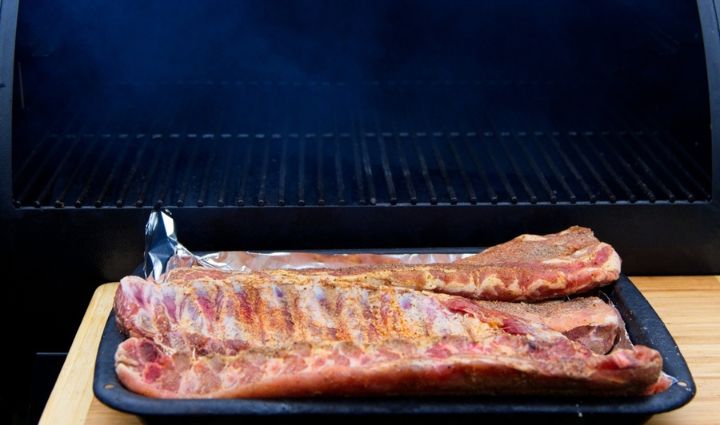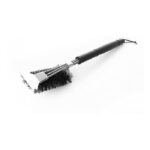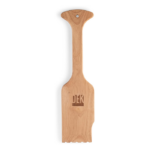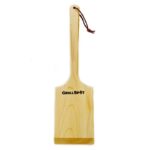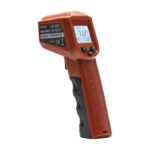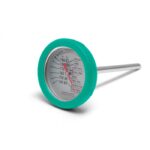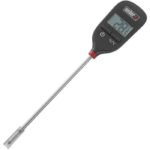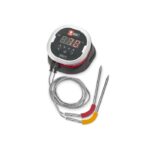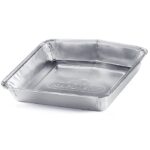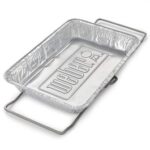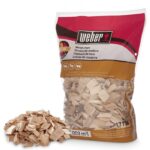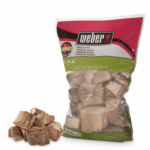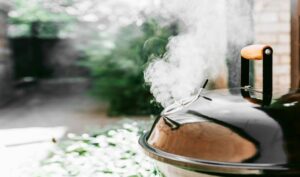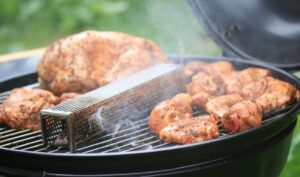Mastering smoke control is a crucial part of learning to smoke meat, and one of the biggest factors in controlling smoke levels is how to regulate temperature in a smoker.
Too much smoke can leave your food with a bitter, acrid taste, while too little might not impart enough smoky flavor. You want that perfect goldilocks smoke—thin and blue—for that just-right smoky BBQ taste.
So, how do you control smoke levels and ensure a clean, flavorful burn? The answer lies in understanding key factors like how to regulate temperature in a smoker, managing airflow, and choosing the right wood.
In this guide, we’ll walk you through six essential steps to maintaining the perfect smoke levels:
- Keeping your smoker clean
- Controlling temperature
- Adjusting airflow
- Practicing patience
- Using water to manage humidity
- Selecting the right wood chips and chunks
Let’s dive in and get you on the path to mastering your smoker.
1. Keeping your smoker clean
We’ve told you about the importance of keeping your grill clean, and keeping your smoker clean is no different. Over time, without regular cleaning, your smoker can develop a buildup of grease, soot, and creosote. This buildup can impact the smoke your smoker produces in two ways:
- It can negatively impact the color of the smoke and result in bad flavor.
- It can make it harder to control the temperature, which also makes it harder to produce the right type of smoke and can overcook your food.
Cleaning your smoker is not all that different from cleaning your grill. When your smoker is cool, you can clean it by:
- Taking out all removable pieces and washing them in warm water and dish soap.
- Scraping the buildup off the interior surfaces.
- Spraying a water and vinegar mix on stuck-on bits and letting it soak before scraping again.
- Wiping interior surfaces with hot, soapy water.
Shop for grill brushes and scrapers:
2. Temperature control
Too much heat will result in too much smoke, so mastering how to regulate temperature in a smoker is one of the most important parts of managing your smoke. The ideal temperature range for a smoker is 200-250F, and it can take a bit of trial and error to learn how to manage your fire by adjusting the vents. Having a digital thermometer on hand can help you keep an eye on the temperature and allow you to adjust things before it gets too smoky.
Shop for grill thermometers:
3. Airflow
How to regulate temperature in a smoker isn’t just about maintaining heat—it’s also about managing smoke production. Airflow is key to how to regulate temperature in a smoker and achieving the right smoke levels. Without proper ventilation, smoke can become too thick, resulting in harsh, bitter flavors. Learning how to adjust your smoker vents or dampers will help you maintain the right temperature and keep your smoke thin and blue.
While some playing around and fine-tuning will be necessary, there are two general rules when it comes to your smoker vents:
- Wide open vents means increased airflow, and fully or partially closed vents means decreased airflow.
- The bottom vent controls oxygen flow to the fire, and the top vent is for fine-tuning and ensures proper airflow through the smoker.
With these two rules in mind, you can experiment with adjusting your vents:
- If your fire is too cold, increase airflow by opening the bottom vent a bit more. You may also need to open the top vent an additional ¼ turn to allow for more air flow to heat up your fire.
- If your fire is too hot, close the bottom vent almost completely to slow the flow of air and decrease the temperature.
- If there’s too much smoke, open the top vent a bit wider to clear it out without increasing the fire temperature (thus creating more smoke)
There’s no strict rule for how much each vent should be opened or closed. It depends entirely on your individual smoker. Until you develop a better feel for your smoker’s behavior, only change one variable at a time so you can pinpoint what impacts the temperature. If you notice temperature fluctuations, make small changes to the intake vent instead of closing the exhaust vent completely.
4. Patience
“Patience is a virtue” is the name of the game when you’re learning to smoke meat. The best smoke is produced when wood chips burn slowly and at a controlled temperature. Mastering how to regulate temperature in a smoker takes time and practice, but once you do, you’ll be able to maintain perfect smoke levels for consistently great barbecue.
5. Using water
Humidity can help you regulate smoker temperature and smoke consistency, allowing you to maintain the perfect smoke levels over longer cooking periods. You can easily introduce moisture to the air by using a pan filled with water. Some smokers will provide dedicated chambers for water pans, or you can simply place a pan on your grill grates if you’re smoking on a gas or charcoal grill.
For balanced heat distribution, place the water pan opposite the coals.
Shop for foil drip pans:
6. Wood chips and chunks
Smoke levels can also be controlled by the type and amount of wood you use for smoking. Hardwoods like apple, cherry, and hickory are most commonly used because they burn the cleanest and produce some of the best flavors. Stay away from softwoods like cedar, which can produce too much smoke, and never use treated wood as it can contain chemicals unsafe for burning and eating.
Start small and add more as you need it. It’s easier to create more smoke than it is to remove it.
Shop for wood chips and chunks:
Wrapping Up
Learning to smoke meat is as much about patience and practice as it is about fire and flavor. One of the biggest challenges is how to regulate temperature in a smoker, as temperature control directly impacts smoke levels. By keeping your smoker clean, adjusting airflow, using water to maintain humidity, and selecting the right wood, you’ll develop the skills needed to create perfectly smoked meats every time.
The key to success lies in maintaining your smoker, regulating temperature, managing airflow, and selecting the right wood. By following these six essential steps—keeping your smoker clean, controlling temperature, adjusting airflow, staying patient, using water for humidity, and choosing the right wood—you’ll be well on your way to mastering the art of smoking.
With these tips, you’ll be creating mouthwatering, perfectly smoked meats in no time. Fire up your smoker and enjoy the journey!

